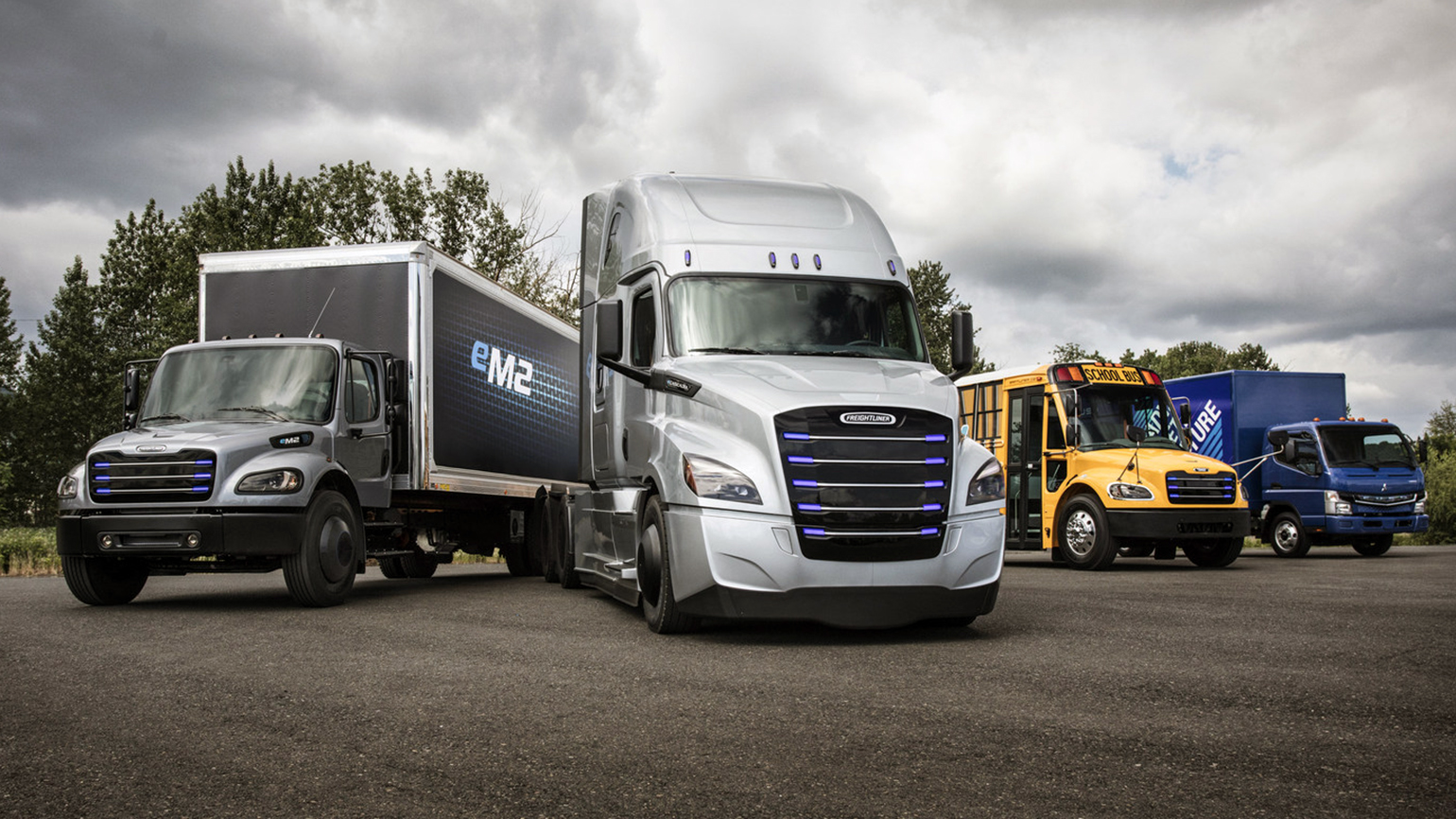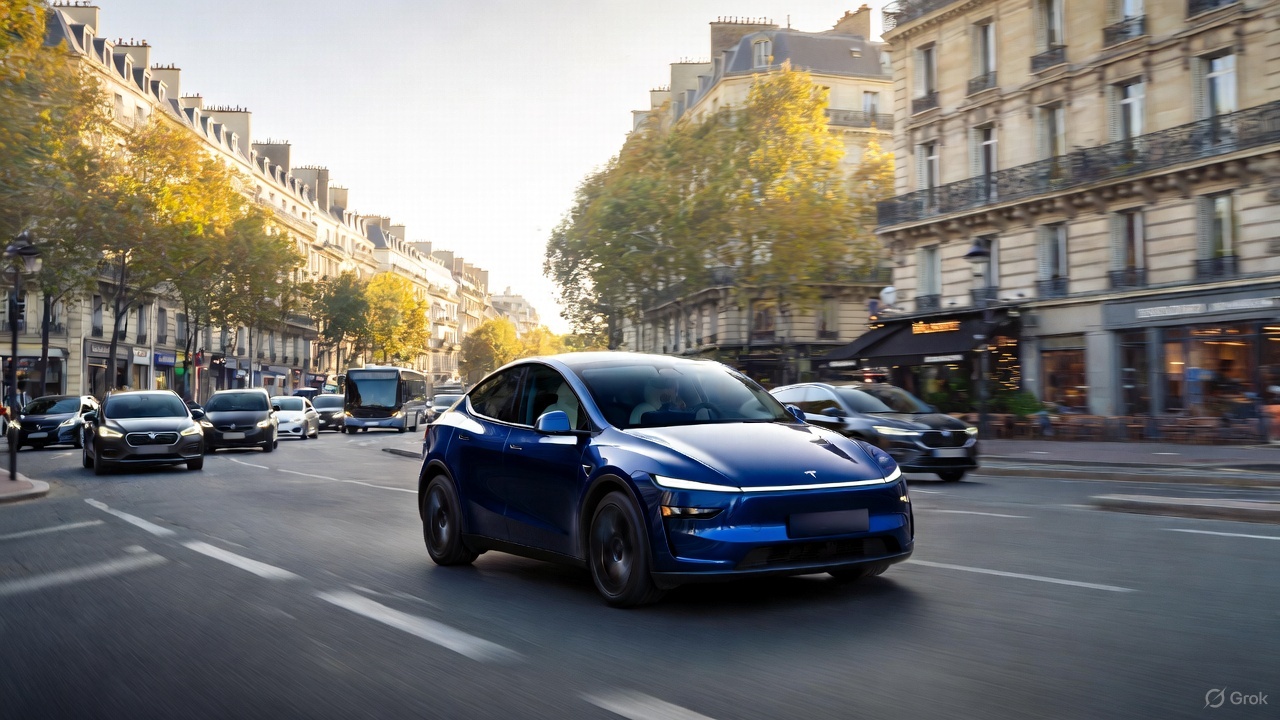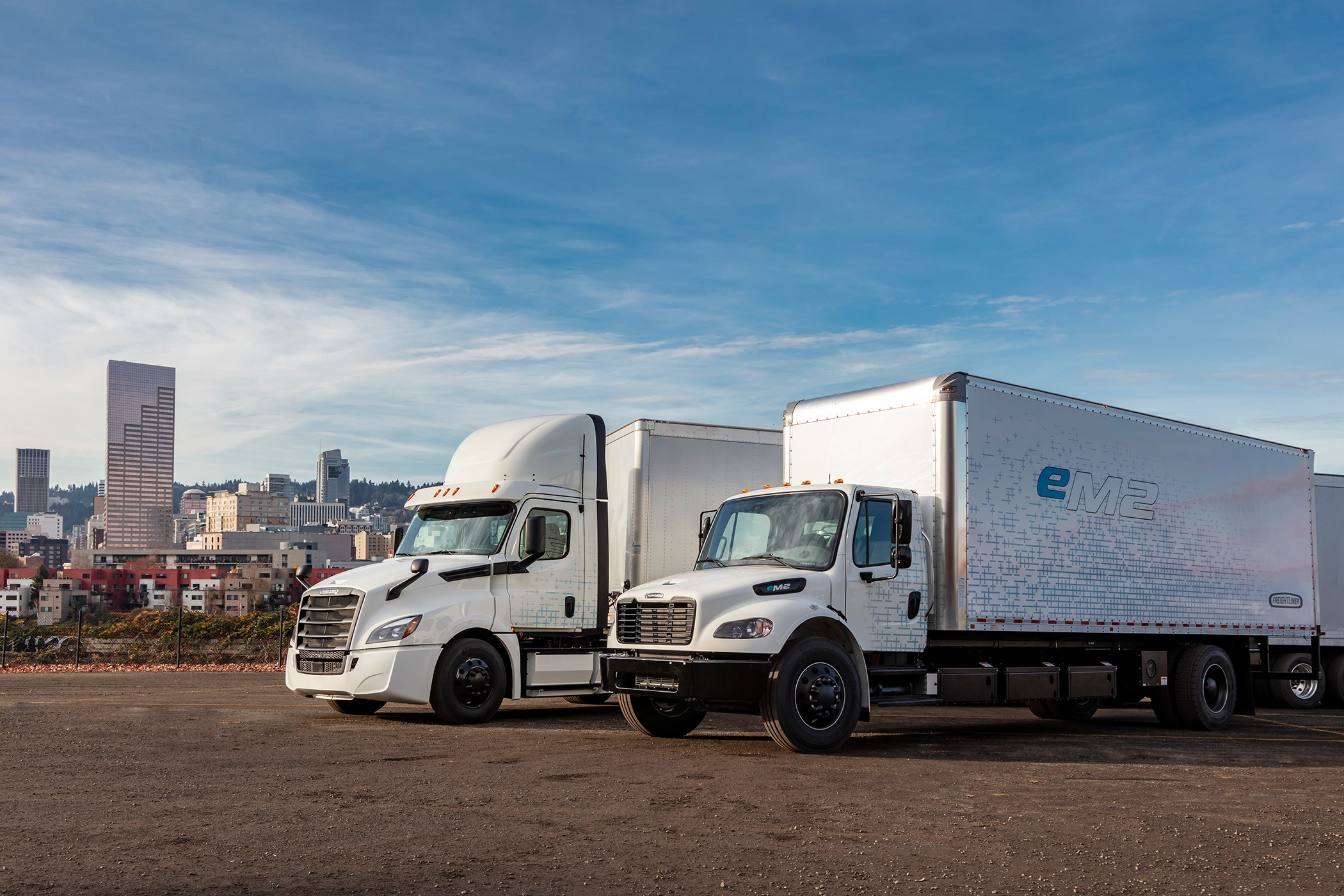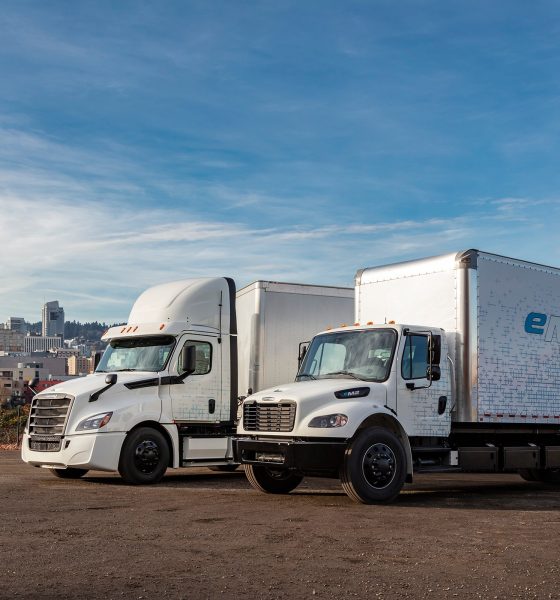Tesla Semi rival Freightliner recently revealed that its test fleet of all-electric commercial trucks has successfully crossed 700,000 miles of real-world travel. In part to several return-to-base type operations, including local and regional pick-up and delivery, Daimler Communications Manager Fred Ligouri detailed the trips and development of its eM2 box truck and eCascadia Class 8 tractor-trailer, the two vehicles responsible for the 700,000-mile travel statistic thus far.
The all-electric vehicle market is raging with competitors, and it goes far beyond the passenger car sector. With Tesla being the dominating force within electric passenger vehicles, fending off competition from several big-name manufacturers, the commercial vehicle sector is definitely wide open. Several companies are testing out all-electric commercial vehicles, and nobody has brought anything to the market that is being mass-produced at the moment. The Tesla Semi has been delayed on several occasions due to battery constraints, and other companies, like Nikola, have disappeared. It’s not to say that there won’t be a dominating company in this sector in the future, but up to this point, it is really anyone’s race.
Daimler Trucks’ line-up of commercial electric vehicles (from left to right): Freightliner eM2, Freightliner eCascadia, Thomas Built Buses Saf-T-Liner C2 Jouley, FUSO eCanter [Credit: Daimler North America]
With that being said, Freightliner believes they have what it takes to derail the hype that coincides with the Tesla Semi. After completing so many miles of real-world testing, Ligouri believes that Freightliner is moving closer to putting its all-electric trucks on the road as testing provides its engineers with valuable feedback from drivers who are giving honest opinions about the vehicles moving forward.
“These are real trucks hauling real freight in the real world and racking up zero-emissions mile after mile — in excess of 700,000 thus far,” Ligouri told Inverse. “Through this process of co-creation with our customers, we are ensuring durability and reliability for series-built trucks, incorporating purposeful innovations, and furnishing the opportunity for more and more fleets to experience eMobility.”
Freightliner is in no rush to put anything out before it’s absolutely ready. There are currently 38 preproduction trucks traveling around Southern California to develop modifications and improvements as the truck moves closer to its production stage. The testing phase is apart of Daimler’s Battery Electric Freightliner Customer Experience Fleet. Drivers are responsible for reporting suggestions, dislikes, and areas of improvement to the manufacturer, who considers each comment.
The trucks aren’t prepared for extremely-long and treacherous routes quite yet. The eM2 box truck packs only 230 miles of range, while the eCascadia can take drivers 250 miles per charge. It’s undoubtedly low compared to regular Semi-trucks, but it’s not to say that it won’t improve. And, after all, it travels with zero-emissions.
While Freightliner has an impressive statistic in its 700,000 miles of travel with its two all-electric trucks, it surely doesn’t have the only Semis on the road that are all-electric. The Tesla Semi has made some runs from Fremont, California, to Sparks, Nevada, and has been tested in real-world conditions as well. Additionally, several new sightings of the Tesla Semi have been reported recently, showing Tesla is undoubtedly working to pinpoint a date for a future production run of its all-electric commercial vehicle. After the recent promotion of Jerome Guillen from Automotive President to President of Heavy Trucking, it is evident Tesla is looking to make major strides in Semi development in 2021.

News
Man credits Grok AI with saving his life after ER missed near-ruptured appendix
The AI flagged some of the man’s symptoms and urged him to return to the ER immediately and demand a CT scan.

A 49-year-old man has stated that xAI’s Grok ended up saving his life when the large language model identified a near-ruptured appendix that his first ER visit dismissed as acid reflux.
After being sent home from the ER, the man asked Grok to analyze his symptoms. The AI flagged some of the man’s symptoms and urged him to return immediately and demand a CT scan. The scan confirmed that something far worse than acid reflux was indeed going on.
Grok spotted what a doctor missed
In a post on Reddit, u/Tykjen noted that for 24 hours straight, he had a constant “razor-blade-level” abdominal pain that forced him into a fetal position. He had no fever or visible signs. He went to the ER, where a doctor pressed his soft belly, prescribed acid blockers, and sent him home.
The acid blockers didn’t work, and the man’s pain remained intense. He then decided to open a year-long chat he had with Grok and listed every detail that he was experiencing. The AI responded quickly. “Grok immediately flagged perforated ulcer or atypical appendicitis, told me the exact red-flag pattern I was describing, and basically said “go back right now and ask for a CT,” the man wrote in his post.
He copied Grok’s reasoning, returned to the ER, and insisted on the scan. The CT scan ultimately showed an inflamed appendix on the verge of rupture. Six hours later, the appendix was out. The man said the pain has completely vanished, and he woke up laughing under anesthesia. He was discharged the next day.
How a late-night conversation with Grok got me to demand the CT scan that saved my life from a ruptured appendix (December 2025)
byu/Tykjen ingrok
AI doctors could very well be welcomed
In the replies to his Reddit post, u/Tykjen further explained that he specifically avoided telling doctors that Grok, an AI, suggested he get a CT scan. “I did not tell them on the second visit that Grok recommended the CT scan. I had to lie. I told them my sister who’s a nurse told me to ask for the scan,” the man wrote.
One commenter noted that the use of AI in medicine will likely be welcomed, stating that “If AI could take doctors’ jobs one day, I will be happy. Doctors just don’t care anymore. It’s all a paycheck.” The Redditor replied with, “Sadly yes. That is what it felt like after the first visit. And the following night could have been my last.”
Elon Musk has been very optimistic about the potential of robots like Tesla Optimus in the medical field. Provided that they are able to achieve human-level articulation in their hands, and Tesla is able to bring down their cost through mass manufacturing, the era of AI-powered medical care could very well be closer than expected.
News
Tesla expands Model 3 lineup in Europe with most affordable variant yet
The Model 3 Standard still delivers more than 300 miles of range, potentially making it an attractive option for budget-conscious buyers.

Tesla has introduced a lower-priced Model 3 variant in Europe, expanding the lineup just two months after the vehicle’s U.S. debut. The Model 3 Standard still delivers more than 300 miles (480 km) of range, potentially making it an attractive option for budget-conscious buyers.
Tesla’s pricing strategy
The Model 3 Standard arrives as Tesla contends with declining registrations in several countries across Europe, where sales have not fully offset shifting consumer preferences. Many buyers have turned to options such as Volkswagen’s ID.3 and BYD’s Atto 3, both of which have benefited from aggressive pricing.
By removing select premium finishes and features, Tesla positioned the new Model 3 Standard as an “ultra-low cost of ownership” option of its all-electric sedan. Pricing comes in at €37,970 in Germany, NOK 330,056 in Norway, and SEK 449,990 in Sweden, depending on market. This places the Model 3 Standard well below the “premium” Model 3 trim, which starts at €45,970 in Germany.
Deliveries for the Standard model are expected to begin in the first quarter of 2026, giving Tesla an entry-level foothold in a segment that’s increasingly defined by sub-€40,000 offerings.
Tesla’s affordable vehicle push
The low-cost Model 3 follows October’s launch of a similarly positioned Model Y variant, signaling a broader shift in Tesla’s product strategy. While CEO Elon Musk has moved the company toward AI-driven initiatives such as robotaxis and humanoid robots, lower-priced vehicles remain necessary to support the company’s revenue in the near term.
Reports have indicated that Tesla previously abandoned plans for an all-new $25,000 EV, with the company opting to create cheaper versions of existing platforms instead. Analysts have flagged possible cannibalization of higher-margin models, but the move aims to counter an influx of aggressively priced entrants from China and Europe, many of which sell below $30,000. With the new Model 3 Standard, Tesla is reinforcing its volume strategy in Europe’s increasingly competitive EV landscape.
News
Tesla FSD (Supervised) stuns Germany’s biggest car magazine
FSD Supervised recognized construction zones, braked early for pedestrians, and yielded politely on narrow streets.

Tesla’s upcoming FSD Supervised system, set for a European debut pending regulatory approval, is showing notably refined behavior in real-world testing, including construction zones, pedestrian detection, and lane changes, as per a recent demonstration ride in Berlin.
While the system still required driver oversight, its smooth braking, steering, and decision-making illustrated how far Tesla’s driver-assistance technology has advanced ahead of a potential 2026 rollout.
FSD’s maturity in dense city driving
During the Berlin test ride with Auto Bild, Germany’s largest automotive publication, a Tesla Model 3 running FSD handled complex traffic with minimal intervention, autonomously managing braking, acceleration, steering, and overtaking up to 140 km/h. It recognized construction zones, braked early for pedestrians, and yielded politely on narrow streets.
Only one manual override was required when the system misread a converted one-way route, an example, Tesla stated, of the continuous learning baked into its vision-based architecture.
Robin Hornig of Auto Bild summed up his experience with FSD Supervised with a glowing review of the system. As per the reporter, FSD Supervised already exceeds humans with its all-around vision. “Tesla FSD Supervised sees more than I do. It doesn’t get distracted and never gets tired. I like to think I’m a good driver, but I can’t match this system’s all-around vision. It’s at its best when both work together: my experience and the Tesla’s constant attention,” the journalist wrote.
Tesla FSD in Europe
FSD Supervised is still a driver-assistance system rather than autonomous driving. Still, Auto Bild noted that Tesla’s 360-degree camera suite, constant monitoring, and high computing power mark a sizable leap from earlier iterations. Already active in the U.S., China, and several other regions, the system is currently navigating Europe’s approval pipeline. Tesla has applied for an exemption in the Netherlands, aiming to launch the feature through a free software update as early as February 2026.
What Tesla demonstrated in Berlin mirrors capabilities already common in China and the U.S., where rival automakers have rolled out hands-free or city-navigation systems. Europe, however, remains behind due to a stricter certification environment, though Tesla is currently hard at work pushing for FSD Supervised’s approval in several countries in the region.










